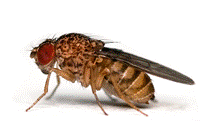Papers in the Biological Sciences

Lawrence G. Harshman Publications
Document Type
Article
Date of this Version
10-2005
Citation
Journals of Gerontology, Series A: Biological Sciences and Medical Sciences, 2005 October, 60(10): 1233–1237
Abstract
We tested the hypothesis that relatively symmetrical flies live longer. Vein measurements on the left and right wings from the same individual were used to characterize bilateral symmetry in relationship to age-specific survival in defined cohorts. A longitudinal cohort study supported the hypothesis of a correlation between bilateral symmetry and longevity. For another type of experiment, wings were removed from females and males at approximately the beginning of adult life. Thus, there would be no effect of wings per se on adult survival. These wings were measured to characterize bilateral asymmetry, and the day of death of each dewinged individual was determined. Wing symmetry of females and males proved to be a statistically significant predictor of life span, especially for males.
PubMed Central version


Comments
Copyright 2005 Oxford University Press. Used by permission.